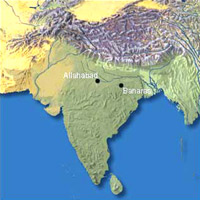During the last days of the Muslim rule, Urdu emerged as the most common language of the northwestern provinces of India. It was declared the official language, and all official records were written in this language. In 1867, some prominent Hindus started a movement in Banaras in which they demanded the replacement of Urdu with Hindi, and the Persian script with the Deva Nagri script, as the court language in the northwestern provinces. The reason for opposing Urdu was that the language was written in Persian script, which was similar to the Arabic script, and Arabic was the language of the Quran, the Holy Book of the Muslims. The movement grew quickly and within a few months spread throughout the Hindu population of the northwestern provinces of India. The headquarters of this movement were in Allahabad.
This situation provoked the Muslims to come out in order to protect the importance of the Urdu language. The opposition by the Hindus towards the Urdu language made it clear to the Muslims of the region that Hindus were not ready to tolerate the culture and traditions of the Muslims.
The Urdu-Hindi controversy had a great effect on the life of Sir Syed Ahmad Khan. Before this event he had been a great advocate of Hindu-Muslim unity and was of the opinion that the “two nations are like two eyes of the beautiful bride, India”. But this movement completely altered his point of view. He put forward the Two-Nation Theory, predicting that the differences between the two groups would increase with the passage of time and the two communities would not join together in anything wholeheartedly.
This article was last updated on Sunday, June 01, 2003



